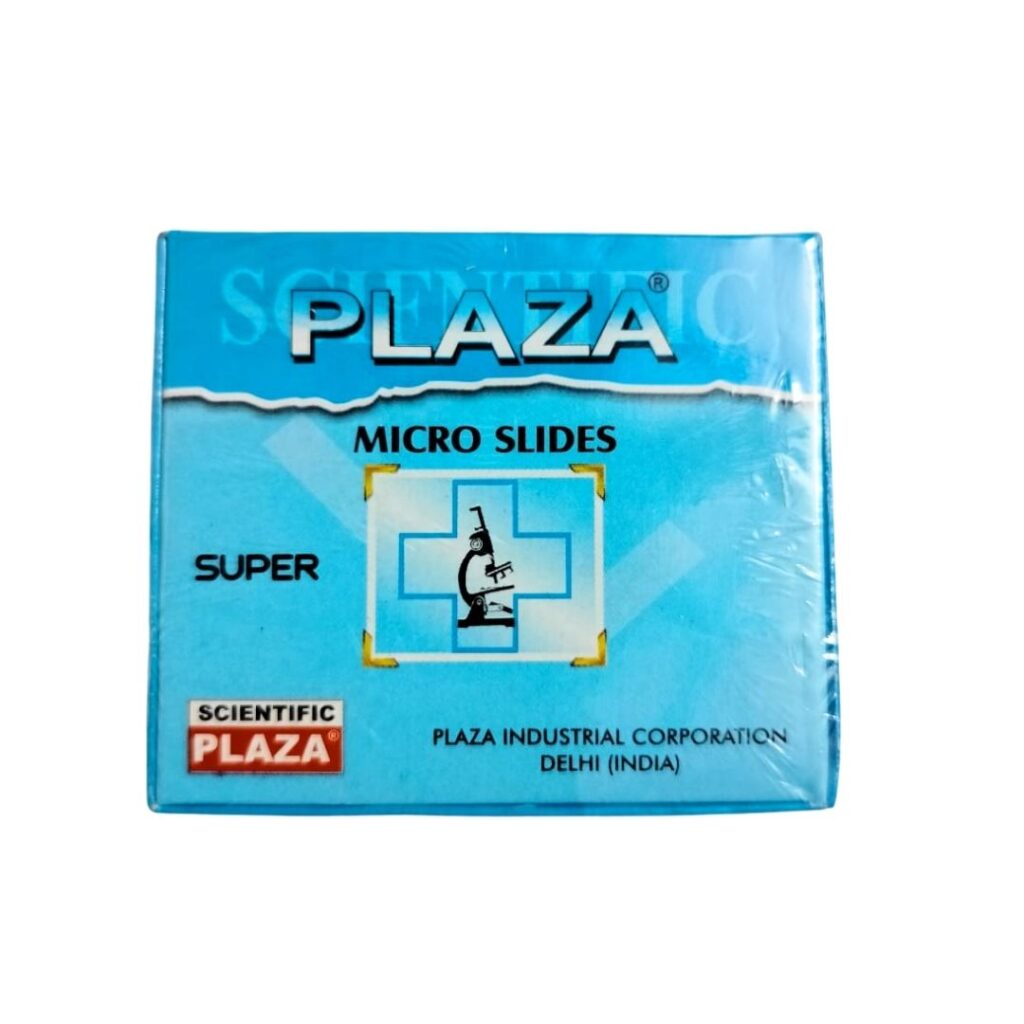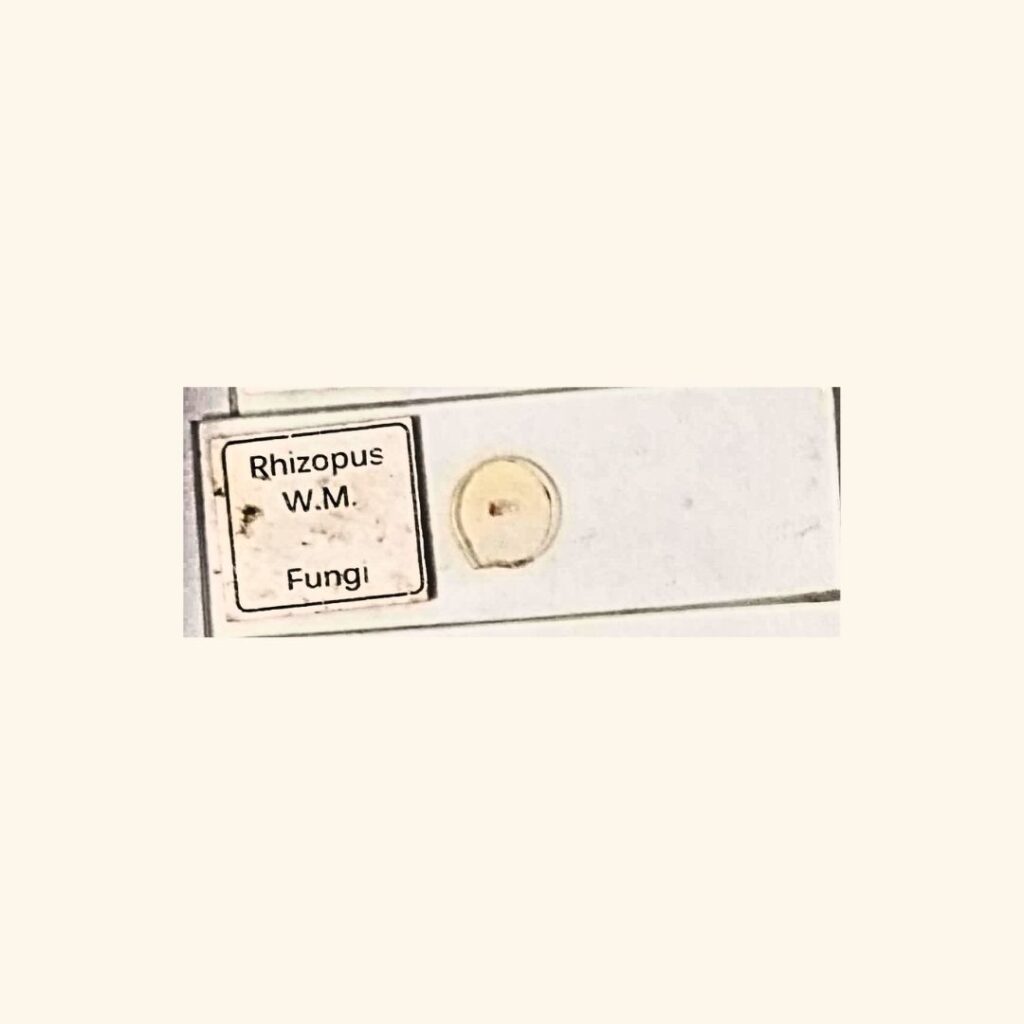-
-
 Cardiology
Cardiology
-
 Clinical Oncology
Clinical Oncology
-
 Dental
Dental
-
 Dermatology
Dermatology
-
 Ear, Nose, Throat (ENT)
Ear, Nose, Throat (ENT)
-
 Endocrinology
Endocrinology
-
 Gastroenterology
Gastroenterology
-
 General Surgery
General Surgery
-
 Gynecology & Obstetrics
Gynecology & Obstetrics
-
 Interventional Cardiology
Interventional Cardiology
-
 Nephrology
Nephrology
-
 Neurology
Neurology
-
 Oncology Surgery
Oncology Surgery
-
 Ophthalmology
Ophthalmology
-
 Orthopedics
Orthopedics
-
 Pediatrics
Pediatrics
-
 Pediatrics Surgery
Pediatrics Surgery
-
 Physiotherapy
Physiotherapy
-
 Plastic Surgery
Plastic Surgery
-
 Psychiatry & Psychology
Psychiatry & Psychology
-
 Radiology
Radiology
-
 Urology
Urology
-
 Vascular Surgery
Vascular Surgery
-
Exploring Biology Practical: Hands-On Learning in Science

Contents
- Introduction to Biology Practical Learning
- Importance of Hands-On Experiments in Biology Education
- Difference Between Theoretical Biology and Practical Biology
- Role of Biology Practicals in Conceptual Understanding
- How Biology Practicals Enhance Scientific Thinking
- Essential Skills Developed Through Biology Practicals
- Overview of Common Biology Practical Experiments
- Laboratory Safety Guidelines for Biology Practicals
- Tools and Equipment Used in Biology Laboratories
- Step-by-Step Approach to Performing Biology Experiments
- Importance of Observation and Data Recording
- Coplin Jar (Standard Size)
- Glass Stirrer (6″)
- Inoculating Loop (for Microbiology)
- Microscope Glass Slides (For Microbiology) – Pack of 50 Slides
- Monocot Root – Transverse Section / Cross Section – Angiosperm Prepared Slide for Microscopy
- Nigrosine Stain Solution-10% (500 ml)
- Oedogonium – Whole Mount – Algae Prepared Slide for Microscopy
- Petri Plates (GLASS) FOR MICROBIOLOGY
- Polylab Plastic Reagent Bottle (Narrow Mouth / 500ml)
- Rhizopus – Whole Mount – Fungi Prepared Slide for Microscopy
- Starch Agar (1 KG)
- Starch Agar (2.5 KG)
- Microscopy Techniques in Biology Practical Sessions
- Dissection Practicals and Their Educational Value
- Biology Practical Experiments in School Curriculum
- Biology Practicals at College and University Level
- Role of Biology Practicals in Competitive Exams Preparation
- Common Challenges Faced During Biology Practical Work
- Tips to Improve Accuracy and Confidence in Biology Practicals
- How Hands-On Biology Learning Improves Academic Performance
- Career Opportunities Linked to Strong Practical Biology Skills
- Future of Biology Practical Learning with Modern Technology
- Why Biology Practicals Are Essential for Science Students
- Conclusion
- Frequently Asked Questions About Biology Practical
Introduction to Biology Practical Learning
Imagine stepping into a laboratory filled with the scent of fresh agar plates, the glint of glass beakers under fluorescent lights, and the hum of excitement in the air. This is where biology transforms from pages in a textbook to vibrant life unfolding before your eyes. Practical learning in biology invites students to dive deep into hands-on experiments that spark curiosity and ignite passion for science.
Biology isn’t just about memorizing diagrams or understanding complex theories. It’s an immersive experience that allows learners to explore living organisms, ecosystems, and biochemical processes firsthand. With each experiment conducted—whether it’s observing cellular structures under a microscope or dissecting specimens—students develop skills that extend far beyond academic knowledge.
As we embark on this exploration of biology practicals, we’ll uncover their significance in education. We will delve into how these experiences shape scientific thinking and enhance comprehension while also preparing students for real-world applications and future careers in science. Let’s take this journey together!
Importance of Hands-On Experiments in Biology Education
Hands-on experiments are crucial in biology education. They transform abstract concepts into tangible experiences. Students engage directly with the material, fostering a deeper understanding of biological processes.
When learners manipulate equipment and observe reactions firsthand, they build connections that textbooks alone cannot provide. This experiential learning ignites curiosity and encourages critical thinking.
Practical work also nurtures essential skills like teamwork and communication. Collaborating on experiments helps students articulate their findings and discuss different perspectives.
Moreover, hands-on activities cater to diverse learning styles. Visual learners benefit from seeing biological phenomena up close, while kinesthetic learners thrive through direct involvement.
These experiments bridge theory with practice, making science both accessible and enjoyable. The excitement of discovery is palpable when students witness their hypotheses unfold in real time.
Difference Between Theoretical Biology and Practical Biology
Theoretical biology focuses on concepts, principles, and models that explain biological processes. It dives into the ‘why’ and ‘how,’ offering a framework for understanding life’s complexities.
In contrast, practical biology emphasizes hands-on experiences. This involves conducting experiments in laboratories or field studies to observe real-life phenomena.
While theoretical knowledge lays the groundwork, practical applications solidify that understanding. Students may read about cellular respiration but truly grasp it only by observing cells under a microscope.
Both approaches are vital in education. Theoretical insights spark curiosity, while practical work fosters critical thinking and problem-solving skills. Together they create a well-rounded comprehension of biological sciences.
Role of Biology Practicals in Conceptual Understanding
Biology practicals serve as a bridge between abstract concepts and real-world applications. When students engage in hands-on experiments, they can witness biological processes firsthand, transforming theory into tangible understanding.
For instance, observing cellular mitosis under a microscope allows learners to grasp the intricacies of cell division. This visual experience deepens comprehension far beyond textbook definitions.
Additionally, practical work encourages inquiry-based learning. Students ask questions and seek answers through experimentation, fostering curiosity about living organisms and ecosystems.
The interactive nature of biology labs promotes collaboration among peers. Discussions around experimental results lead to richer insights and reinforce concepts learned in lectures.
By connecting theoretical knowledge with empirical evidence, biology practicals cultivate critical thinking skills essential for scientific literacy. This experiential approach not only solidifies foundational knowledge but also inspires future exploration in the life sciences.
How Biology Practicals Enhance Scientific Thinking
Biology practicals serve as a crucial bridge between theory and real-world application. They encourage students to think critically about scientific concepts, fostering an inquisitive mindset.
When engaging in hands-on experiments, learners face unexpected challenges that require problem-solving skills. This process cultivates analytical thinking, as students must interpret results and draw conclusions based on their observations.
Moreover, working collaboratively during these activities enhances communication skills. Students discuss findings with peers and explain their reasoning, which sharpens their ability to articulate complex ideas clearly.
The iterative nature of experimentation is another key aspect. Trials often don’t go as planned; this teaches resilience and adaptability—essential traits for any aspiring scientist.
The excitement of discovery during practicals ignites curiosity and passion for biology. This intrinsic motivation drives further inquiry into the biological sciences beyond the classroom setting.
Essential Skills Developed Through Biology Practicals
Engaging in biology practicals fosters a range of essential skills that are invaluable for students. First, it enhances observational abilities. Students learn to notice details in experiments, which is crucial for drawing accurate conclusions.
Hands-on experience also promotes critical thinking. Analyzing results encourages learners to question hypotheses and consider alternative explanations. This analytical mindset is vital not just in science but across various fields.
Collaboration emerges as another key skill during group experiments. Working alongside peers teaches effective communication and teamwork—traits highly sought after in any profession.
Furthermore, time management becomes evident when balancing multiple tasks within a lab setting. Students must prioritize their actions to achieve successful outcomes efficiently.
Technical proficiency develops as students become familiar with laboratory equipment and techniques. Mastering these tools lays the foundation for advanced studies or careers in biological sciences.
Overview of Common Biology Practical Experiments
Biology practicals offer a diverse range of experiments that spark curiosity and deepen understanding. Common activities often include studying cell structure through microscopic examination. This hands-on approach allows students to visualize concepts they learn in theory.
Another popular experiment involves plant biology, such as investigating photosynthesis by measuring oxygen production in aquatic plants like Elodea. This helps highlight the crucial role of sunlight in energy conversion.
Dissection is also a staple, providing insights into anatomy and physiology. Students get an up-close look at organ systems, enhancing their appreciation for biological complexity.
Microbiology experiments frequently focus on culturing bacteria from various environments. Observing growth patterns teaches invaluable lessons about microbial life and its impact on ecosystems.
Genetics labs explore inheritance patterns using fruit flies or pea plants, illuminating Mendelian principles through real-life examples. Each experiment fosters engagement with scientific processes while developing essential laboratory skills.
Laboratory Safety Guidelines for Biology Practicals
Safety in the biology lab is paramount. Students must understand and adhere to specific guidelines to ensure a secure environment.
First, wearing appropriate personal protective equipment (PPE) like lab coats, gloves, and goggles is essential. This gear protects against spills, splashes, and accidental exposure to hazardous materials.
Next, it’s crucial to know the location of safety equipment such as eye wash stations and fire extinguishers. Familiarity with these tools can save lives in emergencies.
Proper handling of biological samples cannot be overlooked. Always treat cultures or specimens as if they are infectious until proven otherwise.
Maintaining a clean workspace helps prevent contamination and accidents. Regularly dispose of waste according to established protocols for safe laboratory practices.
By following these guidelines diligently, students create a safer experience while exploring the wonders of biology through practical learning activities.
Tools and Equipment Used in Biology Laboratories
Biology laboratories are equipped with a variety of tools essential for conducting experiments. Microscopes stand out, allowing students to explore the microscopic world. From simple light microscopes to advanced electron microscopes, these devices open doors to unseen biological structures.
Petri dishes and culture flasks play crucial roles in growing microorganisms and observing cell behavior. Their sterile environments foster experimental accuracy.
Pipettes and graduated cylinders assist in precise measurements of liquids, ensuring that experiments yield reliable results. For dissection tasks, scalpels and forceps are vital for careful manipulation.
Safety gear like gloves and goggles cannot be overlooked; they protect students while promoting safe laboratory practices. Other instruments such as centrifuges help separate cellular components based on density.
Each tool serves a specific purpose, enhancing the learning experience by providing hands-on interaction with biological materials. This engagement fosters deeper understanding within the scientific field.
Step-by-Step Approach to Performing Biology Experiments
Performing biology experiments can be both thrilling and educational. A step-by-step approach ensures that every aspect is covered, leading to accurate results.
First, begin with a clear hypothesis. This sets the stage for what you aim to discover or prove through your experiment.
Next, gather all necessary materials and equipment before diving in. Having everything at hand saves time and prevents confusion during the process.
Once you’re ready, follow the procedure methodically. Make sure to document each step as you progress; this not only helps in data collection but also aids in troubleshooting later on.
After completing the experiment, analyze your findings critically. Discuss any unexpected outcomes and reflect on how they align with your initial hypothesis.
This thorough approach fosters a deeper understanding of biological concepts while enhancing practical skills essential for future scientific endeavors.
Importance of Observation and Data Recording
Observation is the cornerstone of scientific inquiry. It allows students to engage directly with biological concepts and phenomena. By carefully watching processes unfold, learners develop a deeper understanding of life sciences.
Data recording complements observation by providing concrete evidence to support findings. Accurate notes help track changes and patterns over time, leading to valuable insights.
In biology practicals, students learn not just what they see but also how to describe it effectively. This skill enhances their ability to communicate complex ideas clearly.
Moreover, documenting experiments fosters critical thinking. Students analyze results and draw conclusions based on gathered data rather than assumptions or guesses.
This disciplined approach cultivates attention to detail—a vital trait for any aspiring scientist or researcher in the field of biology or beyond.
Microscopy Techniques in Biology Practical Sessions
Microscopy techniques are essential for exploring the microscopic world in biology practical sessions. They allow students to visualize cells, tissues, and microorganisms that are otherwise invisible to the naked eye.
Light microscopes remain a staple in many labs because they are user-friendly and versatile. Students learn how to adjust focus and magnification, providing a hands-on understanding of cell structures.
For more advanced studies, electron microscopes offer incredible detail. These instruments reveal cellular components at nanometer resolution. Although they require specialized training, the insights gained from using an electron microscope can be awe-inspiring.
Preparing slides correctly is crucial for successful microscopy work. This includes staining techniques that enhance visibility. Proper preparation helps students appreciate the complexity of biological samples.
By mastering these skills, aspiring biologists develop critical observation abilities necessary for scientific inquiry. Microscopy not only deepens knowledge but also fosters curiosity about life at its most fundamental level.
Dissection Practicals and Their Educational Value
Dissection practicals offer an engaging way to explore anatomy and physiology. Students gain firsthand experience with the structure of organisms, deepening their understanding of biological systems.
Handling real specimens fosters a connection between theory and practice. This tactile learning reinforces concepts that textbooks alone cannot convey.
Through dissection, students also enhance critical thinking skills as they observe details and make connections about form and function. Each cut reveals layers of complexity within living beings.
Moreover, these sessions promote teamwork in a lab setting. Collaborating on dissections cultivates communication skills while encouraging diverse perspectives on interpretation.
Ethical considerations are crucial too; discussions surrounding the use of specimens encourage respect for life sciences. Such dialogues foster a sense of responsibility among future scientists as they navigate their studies in biology.
Biology Practical Experiments in School Curriculum
Biology practical experiments are a vital component of school curricula. They bridge the gap between theoretical concepts and real-world applications. Students engage directly with biological processes, enhancing their understanding.
These hands-on activities often include dissections, microscopy, and various investigative projects. Such experiences ignite curiosity and foster a deeper appreciation for life sciences.
Through practical work, students learn to formulate hypotheses and analyze results. This process encourages critical thinking skills essential in scientific exploration.
Teachers play an influential role in guiding these experiments. Their expertise helps students navigate challenges while nurturing a safe learning environment.
Additionally, practicals cater to diverse learning styles. Visual learners benefit from observing specimens under microscopes, while kinesthetic learners thrive during interactive lab sessions.
Integrating biology practicals into the curriculum not only reinforces knowledge but also inspires future scientists.
Biology Practicals at College and University Level
At the college and university level, biology practicals take on a deeper significance. Students dive into complex biological systems and methodologies that form the foundation of advanced scientific inquiry.
Courses often emphasize research-based experiments where students design their own studies. This autonomy fosters critical thinking and creativity in problem-solving.
Hands-on experiences with sophisticated equipment such as spectrophotometers or PCR machines become routine. These tools provide insights into genetic engineering, microbiology, and environmental science.
Collaborative projects are common, encouraging teamwork among peers while tackling real-world issues like disease control or ecological conservation.
Moreover, faculty members act as mentors during these practical sessions, guiding students through challenges that arise in experimental work. The supportive environment allows for questions to be explored thoroughly.
Such immersive learning experiences not only boost knowledge but also prepare students for careers in research, healthcare, biotechnology, and education within the life sciences sector.
Role of Biology Practicals in Competitive Exams Preparation
Biology practicals play a significant role in preparing students for competitive exams. These hands-on experiences deepen understanding of biological concepts, making them easier to recall during tests.
When faced with multiple-choice questions or essay prompts, students who have engaged in practical work often find it simpler to apply their knowledge effectively. Experiments reinforce theoretical learning and help clarify complex topics.
Moreover, many competitive exams include sections on practical applications of biology. Familiarity with lab techniques gives students an edge over peers who may rely solely on textbook knowledge.
Practicals also enhance critical thinking skills that are essential for problem-solving scenarios in exam settings. Engaging directly with scientific methods enables candidates to tackle unexpected questions confidently and efficiently.
The experience gained from conducting experiments cultivates a sense of curiosity and analytical prowess vital for success beyond the classroom environment.
Common Challenges Faced During Biology Practical Work
Conducting biology practical work can be a thrilling experience, but it’s not without its challenges. One common issue is the complexity of experiments. Some procedures require precise techniques that may take time to master.
Another hurdle is equipment availability. Laboratories often face limitations in terms of tools and materials, making it difficult for students to perform certain experiments effectively.
Time management also poses a challenge. Experiments can be time-consuming, and balancing these with theoretical studies might feel overwhelming at times.
Students may struggle with interpreting results too. Analyzing data requires critical thinking skills which develop over time through practice and exposure.
Lab safety cannot be overlooked. Understanding safety protocols is essential but sometimes underemphasized during training sessions, leading to potential risks if proper precautions aren’t taken seriously while handling specimens or chemicals.
Tips to Improve Accuracy and Confidence in Biology Practicals
To enhance accuracy in biology practicals, start by familiarizing yourself with the experiment’s protocol. Read through each step carefully before beginning.
Practice precision while measuring substances. Use calibrated equipment and take your time to ensure correct measurements.
Maintain a clean workspace. A clutter-free environment reduces errors and helps you focus on the task at hand.
Take detailed notes during experiments. Document observations meticulously; they can prove invaluable for analysis later.
Seek feedback from instructors or peers after completing an experiment. Constructive criticism is vital for growth and improvement.
Develop a routine that includes reviewing past experiments regularly. This not only reinforces knowledge but also builds confidence as you recognize progress over time.
Embrace mistakes as learning opportunities rather than setbacks. Each error provides insight into refining your techniques and approaches in future practices.
How Hands-On Biology Learning Improves Academic Performance
Hands-on biology learning creates an engaging environment that stimulates curiosity. When students participate in experiments, they connect theoretical concepts to real-world applications.
This active involvement deepens understanding. It allows learners to visualize processes like photosynthesis or cellular respiration, making complex ideas more tangible.
Moreover, practical work fosters critical thinking and problem-solving skills. Students learn to hypothesize, conduct tests, and interpret results. This scientific method approach builds confidence in their ability to tackle academic challenges.
Additionally, collaborative experiments enhance communication skills among peers. Working together cultivates teamwork and encourages discussion about findings.
As a result of this interactive experience, students often show improved retention rates of biological information. Their enthusiasm for the subject grows as they witness firsthand the wonders of life sciences unfolding before them.
Career Opportunities Linked to Strong Practical Biology Skills
Strong practical biology skills open doors to numerous career opportunities. These skills are essential in fields like healthcare, environmental science, and biotechnology.
Laboratory technicians can thrive by applying their hands-on experience with experiments and analysis. They play a crucial role in research labs, hospitals, and diagnostic centers.
For those interested in conservation, positions as wildlife biologists or ecologists become accessible. Practical knowledge helps them assess ecosystems and devise strategies for preservation.
Additionally, careers in pharmaceuticals offer prospects for individuals skilled at conducting trials and developing new drugs. The industry values candidates who can effectively translate theory into practice.
Teaching also becomes an avenue for sharing knowledge of biology through experiential learning methods. Educators equipped with practical skills engage students more profoundly than traditional approaches allow.
With the rise of bioinformatics and data science related to biology, professionals adept at blending technology with biological concepts are increasingly sought after across various sectors.
Future of Biology Practical Learning with Modern Technology
The future of biology practical learning is being revolutionized by modern technology. Innovations like virtual reality and augmented reality offer immersive experiences that transcend traditional classroom boundaries. Students can explore complex biological systems in 3D, enhancing their understanding without the limitations of physical specimens.
Digital labs are also emerging as powerful tools. They allow students to conduct experiments online, providing immediate feedback and real-time data analysis. This not only makes science accessible but fosters collaborative learning among peers from different locations.
Moreover, advancements in artificial intelligence enable personalized education pathways. Tailored simulations can adapt to individual learning styles, making biology more engaging for diverse student populations.
As technology continues to evolve, integration with biotechnology will prepare students for future careers in research and healthcare fields. This dynamic shift promises a richer educational experience where curiosity thrives alongside innovation.
Why Biology Practicals Are Essential for Science Students
Biology practicals serve as a bridge between textbook knowledge and real-world applications. For science students, this hands-on experience is vital for engaging with the subject matter deeply.
Through experiments, students can observe biological processes firsthand. This direct interaction fosters curiosity and enhances understanding. It allows learners to connect theories with tangible results.
Moreover, practical sessions cultivate critical thinking skills. Students learn to formulate hypotheses, conduct experiments, and analyze data effectively. These competencies are crucial not just in academia but also in various careers.
Working collaboratively during lab sessions promotes teamwork and communication skills. Such experiences prepare students for future scientific endeavors where collaboration is key.
Biology practicals instill a sense of responsibility regarding safety protocols and ethical considerations in research. Understanding these aspects is fundamental for any aspiring scientist aiming to make meaningful contributions to the field.
Conclusion
Hands-on learning in biology has a transformative effect on students. It cultivates a deeper understanding of complex concepts through direct engagement with the material.
Practical experiments foster curiosity and inspire new questions. They encourage students to explore, analyze, and connect theoretical knowledge with real-world applications.
Moreover, these experiences enhance critical thinking skills vital for scientific inquiry. Students learn to approach problems systematically and creatively.
As technology evolves, so too does the landscape of biology practicals. Virtual labs and simulations are becoming integral components of science education.
The future holds exciting possibilities for integrating innovative tools into traditional methods. This evolution will make biological sciences even more accessible and engaging for learners everywhere.
Embracing hands-on biology learning prepares students not only academically but also equips them with essential life skills that extend beyond the classroom walls.
Frequently Asked Questions About Biology Practical
Hands-on learning through biology practicals is a cornerstone of effective science education. These experiences not only enhance understanding but also cultivate essential skills that students carry into their future careers.
What are some common types of biology practical experiments?
Common experiments include microscopy observing cell structures, plant dissections, enzyme activity assays, and genetics investigations like Punnett squares using pea plants.
How can I improve my accuracy during biology practicums?
Improve accuracy by following protocols closely, practicing techniques regularly, staying organized with your data collection methods, and discussing results with peers or instructors for insights on potential errors.
Are there specific safety guidelines I should follow in a biology lab?
Yes! Always wear protective gear such as goggles and gloves; familiarize yourself with emergency exits; handle all chemicals properly; dispose of waste according to regulations; never eat or drink in the lab area.
Why is observation so important during experiments?
Observations help clarify hypotheses and guide experimental adjustments as needed—making it essential to record both expected outcomes and any unexpected results accurately throughout the process.
How do dissection practicum sessions benefit students’ learning?
Dissections provide firsthand insight into anatomical structures’ function while fostering fine motor skills necessary for various scientific professions ranging from medicine to research.


 Anatomy Lab Equipments
Anatomy Lab Equipments
 Biochemistry Lab Equipments
Biochemistry Lab Equipments
 Biology Lab Equipments
Biology Lab Equipments
 Chemistry Lab Equipments
Chemistry Lab Equipments
 Cytology Lab Equipments
Cytology Lab Equipments
 Cytopathology Lab Equipments
Cytopathology Lab Equipments
 Dental Lab Equipments
Dental Lab Equipments
 Forensic Lab Equipments
Forensic Lab Equipments
 Genetics Lab Equipments
Genetics Lab Equipments
 Hematology Lab Equipments
Hematology Lab Equipments
 Histology Lab Equipments
Histology Lab Equipments
 Histopathology Lab Equipments
Histopathology Lab Equipments
 Mathematics Lab Equipments
Mathematics Lab Equipments
 Microbiology Lab Equipments
Microbiology Lab Equipments
 Molecular Biology Lab Equipments
Molecular Biology Lab Equipments
 Pathology Lab Equipments
Pathology Lab Equipments
 Pharmaceutical Lab Equipments
Pharmaceutical Lab Equipments
 Physics Lab Equipments
Physics Lab Equipments
 Radiology Lab Equipments
Radiology Lab Equipments
 Science Lab Kit’s
Science Lab Kit’s
 Toxicology Lab Equipments
Toxicology Lab Equipments

 Borosilicate Glass Beaker
Borosilicate Glass Beaker
 Plastic Beaker (Euro Design)
Plastic Beaker (Euro Design)
 Plastic Beaker (Printed Graduation)
Plastic Beaker (Printed Graduation)
 Test Tube Brush
Test Tube Brush
 Measuring Cylinder Brush
Measuring Cylinder Brush
 Conical Flask Brush
Conical Flask Brush
 Volumetric Flask Brush
Volumetric Flask Brush
 Round Bottom Flask Brush
Round Bottom Flask Brush
 Glass Beaker Brush
Glass Beaker Brush
 Pipette Brush
Pipette Brush
 Wash Bottle Brush
Wash Bottle Brush
 Borosilicate Büchner Flask
Borosilicate Büchner Flask
 Borosilicate Erlenmeyer/Conical Flask
Borosilicate Erlenmeyer/Conical Flask
 Borosilicate Pear-Shaped Flask
Borosilicate Pear-Shaped Flask
 Borosilicate Round Bottom Flask
Borosilicate Round Bottom Flask
 Plastic Conical Flask
Plastic Conical Flask
 Plastic Volumetric Flask
Plastic Volumetric Flask
 Bunsen Burner
Bunsen Burner
 Spirit Lamp
Spirit Lamp
 Borosilicate Glass Burette
Borosilicate Glass Burette
 Plastic Burette
Plastic Burette
 Capillary Tube
Capillary Tube
 Centrifuge Tube
Centrifuge Tube
 Test Tube
Test Tube
 Ria Vial
Ria Vial
 Vacutainer Tubes
Vacutainer Tubes
 Syringes
Syringes
 Student Microscope
Student Microscope
 Binocular Microscope
Binocular Microscope
 Dissecting Microscope
Dissecting Microscope
 Microscope Glass Slides
Microscope Glass Slides
 Cover Slip
Cover Slip
 Inoculating Loop
Inoculating Loop
 Slide Box
Slide Box
 Lamps
Lamps
 Oils
Oils
 Beaker Tongs
Beaker Tongs
 Crucible Tongs
Crucible Tongs
 Flask Tongs
Flask Tongs
 Borosilicate Glass Funnel
Borosilicate Glass Funnel
 Plastic Funnels
Plastic Funnels
 Wash Bottle
Wash Bottle
 Borosilicate Glass Reagent Bottle
Borosilicate Glass Reagent Bottle
 Plastic Reagent Bottle
Plastic Reagent Bottle
 Borosilicate Measuring Cylinder
Borosilicate Measuring Cylinder
 Plastic Measuring Cylinder
Plastic Measuring Cylinder
 Borosilicate Glass Graduated Pipette
Borosilicate Glass Graduated Pipette
 Borosilicate Glass Volumetric Pipette
Borosilicate Glass Volumetric Pipette
 HB Pipette
HB Pipette
 Pasteur Pipette
Pasteur Pipette
 Micropipettes
Micropipettes
 Micropipette Tips
Micropipette Tips
 Filter Paper
Filter Paper
 Litmus Paper
Litmus Paper
 pH Paper
pH Paper
 Chromatography Paper
Chromatography Paper
 Plastic Petri Plates (Sterile)
Plastic Petri Plates (Sterile)
 Glass Petri Plates (Non-Sterile)
Glass Petri Plates (Non-Sterile)
 Safety Goggles
Safety Goggles
 Lab Coats
Lab Coats
 Gloves
Gloves
 Masks
Masks
 Shoe Covers
Shoe Covers
 Hair & Beard Covers
Hair & Beard Covers
 Steel Spatula
Steel Spatula
 Plastic Spatula
Plastic Spatula
 Hitachi Sample Cup
Hitachi Sample Cup
 Plastic Scoop
Plastic Scoop
 Plastic Medicine Cup
Plastic Medicine Cup
 Dissecting Tool Kit
Dissecting Tool Kit
 Dissecting Forceps
Dissecting Forceps
 Hemostatic Forceps
Hemostatic Forceps
 Thumb Forceps / Tweezers
Thumb Forceps / Tweezers
 Blood Culture Bottle
Blood Culture Bottle
 Urine Container
Urine Container
 Wooden Swab Stick
Wooden Swab Stick
 Test Tube Holder
Test Tube Holder
 Test Tube Racks
Test Tube Racks
 Magnifying Glass
Magnifying Glass
 Watch Glass
Watch Glass
 Mortar and Pestle
Mortar and Pestle
 Coplin Jar
Coplin Jar
 Plastic Stirrer
Plastic Stirrer
 Glass Stirrer
Glass Stirrer
 Crucible
Crucible
 Tripod
Tripod
 Wire Mesh
Wire Mesh
 Laboratory Thermometer
Laboratory Thermometer
 Tourniquet
Tourniquet
 Alcohol Swab
Alcohol Swab
 Blood Lancet
Blood Lancet
 Bandage
Bandage
 Gloves & Masks
Gloves & Masks


















 Cardiology
Cardiology Clinical Oncology
Clinical Oncology






